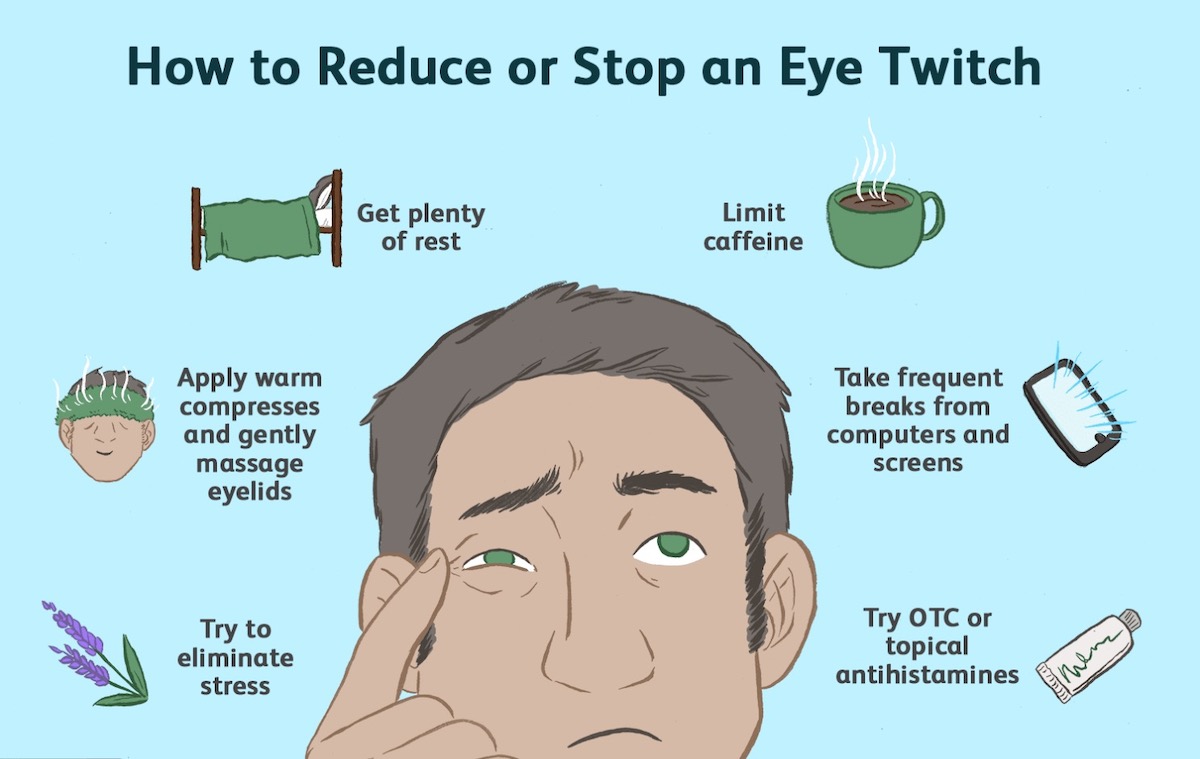While eye twitching is usually not a sign of anything serious, it can sometimes be a symptom of other conditions. For instance, it might indicate neurological disorders such as Bell’s palsy, where part of your face might temporarily weaken or become paralyzed, or Parkinson’s disease, which affects movement and can cause shaking. Other examples include dystonia, which leads to involuntary muscle contractions, and Tourette syndrome, known for causing repeated movements or unwanted sounds. Additionally, eye twitching can be linked to more severe eye conditions like blepharospasm, where there is an abnormal blinking or eyelid twitch, and even certain forms of epilepsy, which can cause various types of seizures.

Symptoms of Eye Twitching
The symptoms of eye twitching are pretty straightforward, but let’s highlight the two most common ones. Firstly, you might notice a slight pulling sensation in your eyelid, sort of like a gentle tug that comes and goes without any pattern. Secondly, you could actually see your eyelid moving or twitching when you look in the mirror, which might be surprising or a bit annoying, but it’s usually not painful. Other common symptoms that might accompany eye twitching include:
- A feeling of increased sensitivity to light, where bright lights might seem more glaring than usual.
- A slightly blurry vision, especially if the twitching is strong or happens a lot.
- Having a feeling that there’s something in your eye, like an eyelash or a speck of dust, even when there isn’t.
- Rarely, the twitching might make your whole eye feel like it’s closing up or winking without you trying to do so.
How Is This Eye Condition Diagnosed?
Diagnosing eye twitching is, just like its symptoms, pretty straightforward. If your eye starts to twitch, and it doesn’t stop after a little while, you might decide to visit a doctor to check it out. The doctor will ask you some questions about what you’ve been experiencing, like how often the twitching happens and if you’ve been feeling stressed or not getting enough sleep. They might also ask if you’ve had any changes in your vision or if you’ve been consuming more caffeine or alcohol than usual.
Then, they’ll take a look at your eye, possibly using a light to see better. In most cases, this simple check-up is all that’s needed. However, if the doctor thinks there might be a more serious reason behind the twitching, they might suggest further tests, but that’s not common for typical eye twitching.
Are There Any Treatment Options?
To help reduce or treat eye twitching, there are a couple of simple things you can do. First, try to get more sleep. If your body is well-rested, it’s less likely your eyelid will start dancing on its own. Think of it like charging your phone—enough sleep gives your body the energy it needs to function smoothly. Second, work on lowering your stress levels. Whether it’s through exercise, meditation, or spending time doing things you love, feeling more relaxed can help calm down those twitchy eyelids. Other common options to help with eye twitching include:
- Cutting back on caffeine and alcohol, since too much can lead to twitching.
- Making sure your eyes aren’t too dry, perhaps by using lubricating eye drops if needed.
- Taking regular breaks to rest your eyes, especially if you spend a lot of time in front of screens.
- Wearing glasses if you need them, to avoid straining your eyes.
Eye health issues can be very dangerous and uncomfortable. Always do your own research for treatments and choose one that suits you – and your physician. To help you on your way, start your online research here:

